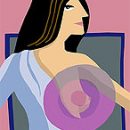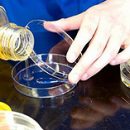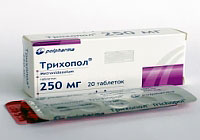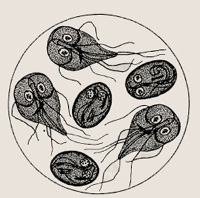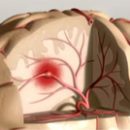What is Teniosis? How the disease occurs? How treatment with shadine? Answers to these questions you will find in the article.
Content
Teniosis
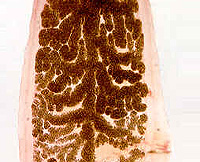 Tenion - Helmintosis (Cestodoz), a glitstic disease that flows with toxic-allergic reaction and dyspecical disorders (digestive disorder).
Tenion - Helmintosis (Cestodoz), a glitstic disease that flows with toxic-allergic reaction and dyspecical disorders (digestive disorder).
The pathogen is a ribbon worm (cester) Taenia Solium (pork solitir, armed chain)
The length of the adult individual - 1.5-2m and more. The head of the parasite has 4 suckers and 2 rows of hooks (up to 30). The life cycle passes with a change of two owners - a man and pig. Helmint dwells in a small intestine of a person for several years. Mature segments and eggs stand out with feces into an external environment where they eat pigs (intermediate owner). Externally eggs are indistinguishable from bull chain eggs. In the intestine, pigs from eggs are leaving the embryos (oncospheres), penetrate the vessels and are recorded in the fabric, where in the muscles in the muscles, bubbles with larvae (Finns or cystizers) resembling Finns of a bull chain develop.
The disease is registered in Asia, Russia, Eastern Europe, Latin America. Final owner and source of infection - man. Intermediate hosts - pigs, rarely - boars, dogs, cats, as well as man, in intertensive connective tissue which are formed cystizers with a length of 7-10 mm. When pumping eggs in humans, a tissue infection is developing - cysticercosis (a disease that is caused by parasitizing in the body of a pork chain larvae). When using infected pork pork, a man develops a shaded (disease caused by parasitization of more than 40 types of large cestodes of shaded shadow).
How the shades flows
Cysticercosis of soft tissues is often asymptomane. When subcutaneous parasitization, soft single or multiple nodes are observed (often on breast and back). After the death of parasites, they are compacted and become painful. Cystic cerebsis of the brain is most dangerous, forming 5-15 mm finns in diameter (in brain ventricles - up to 30-50 mm), squeezing cerebral tissue. Depending on the localization of cysticercors in the brain is possible
Headaches, epileptiform seizures (general name of paroxysmal disorders (seizures), which are one of the manifestations of the organic process in the brain), delirium (disorder of consciousness), hallucinations,
Amenitative syndrome (One of the forms of permanent consciousness, in which confusion prevailing, incoherence of thinking and speech, chaotic movement), Hypertensional syndrome.
Research methods
- Detection of eggs and oncospheric in feces. Under negative results, wash the intestines
- Blood test: Eosinophilia (increase in the number of eosinophils in the blood)
- Biopsy of the amazed material
- Radiography
- Cysticercosis of the brain
- Radiography; Magnetic resonance imaging, computed tomography
- SMG (research of the spinal cord fluid): lymphocytosis (Increased lymphocyte) and eosinophilia (increased amount of eosinophils); Lange's sample (characteristic curve resembling a curve under progressive paralysis).
Treatment and prevention of shady
Preparation of choice - Phenasal 2 g (thoroughly crowned in 1/4 cup of warm water) once in the morning on an empty stomach or for the night after 3-4 hours after a slight dinner. 10-15 minutes before the reception of the drug give 1-2 g sodium bicarbonate. Alternative preparation - Praziquantel at 2.5-10 mg / kg inside once.
With cysticercosis: Surgical treatment (removal of large nodes) in combination with anti-inflammatory and dehydration therapy.
Prevention
- Early detection of patients and observation of them for 6 months after treatment.
- Sanitary examination of pork.

